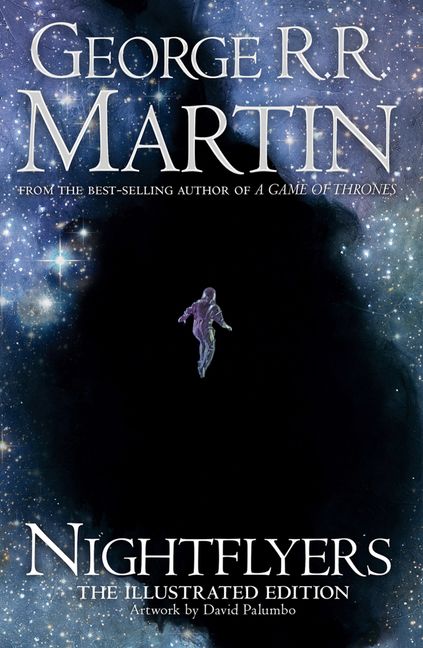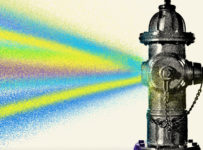
There was a time when George RR Martin was a somewhat prolific writer. Before he was sitting on a large pile of money and an even larger writer's block, Martin wrote a little bit of everything: short stories about psychic rats; novels about Southern vampires long before Sookie Stackhouse; a fantasy history of a fake band. Nightflyers is his psychic science fantasy horror novella.
The Nightflyer carries a scientific team seeking to make contact with a space-faring species known as the volcryn. After the team's telepath has a bad reaction to the psychic echoes of the ship, Melantha Jhirl must ally with the mysterious and unseen Captain Royd Eris to prevent the crew's total extinction.
Nightflyers, with its 2012 illustrations care of Daniel Palumbo, is a haunted spaceship novella with a genuine air of the sinister about it. Set in a universe shared with several other Martin stories, it already feels lived in, and the bargain basement nature of several of the crew members speaks to a deeper stratification of their shared society and future academia.
That a deep space story including both telepathy and telekinesis can feel fresh in 2019 means that science fantasy clearly doesn't get enough play, even as Star Wars still runs rampant in the streets and the Marvel Cinematic Universe is also the Marvel Cosmic Universe. Nightflyers had its time nearly forty years ago, but its storytelling is so airtight that it remains fresh.
Nightflyers is progressive, but in a 1980 sort of way, when genre authors were preoccupied with sexing up their work; more than once Martin uses "sex†as a verb. There is nothing graphic in Nightflyers' depiction of its characters' sexuality, but an enlightened future in which a ship's crew has what almost amounts to a coupling roster is an odd note to strike. As per usual with practically everything, the women are resolutely bisexual while the men are ambiguously heterosexual. It's irrelevant to the overall story, so there's no real reason not to make the Nightflyer a pansexual glob if it's going to be a factor at all.
Despite that, Melantha and Eris are genuine characters, and the remainder of the crew display varying degrees of depth as the story demands it. More important than wider character notes is the atmosphere of the ship. The Nighflyer is autonomous, but not in the way that your standard rogue AI is. The Nightflyer does not speak, but it makes itself known, and it is this terrifying knowledge that ultimately defines the crew. Martin ramps up the tension and communicates it to the reader with atmosphere more than any individual action.
Martin's shorter form work is nothing like A Song of Ice and Fire. Playing with a self-contained narrative suits him, and Nightflyers is a complete story set in a cruel but compelling universe. The hope— and it's not an unreasonable one —is that Martin can finish his magnum opus not just so we can know how it ends (A Game of Thrones does not count; though it corroborates some facts, it is akin to very expensive [and lucrative] fan fiction) so that more strange and wonderful works like Nightflyers might spring forth once again.E


